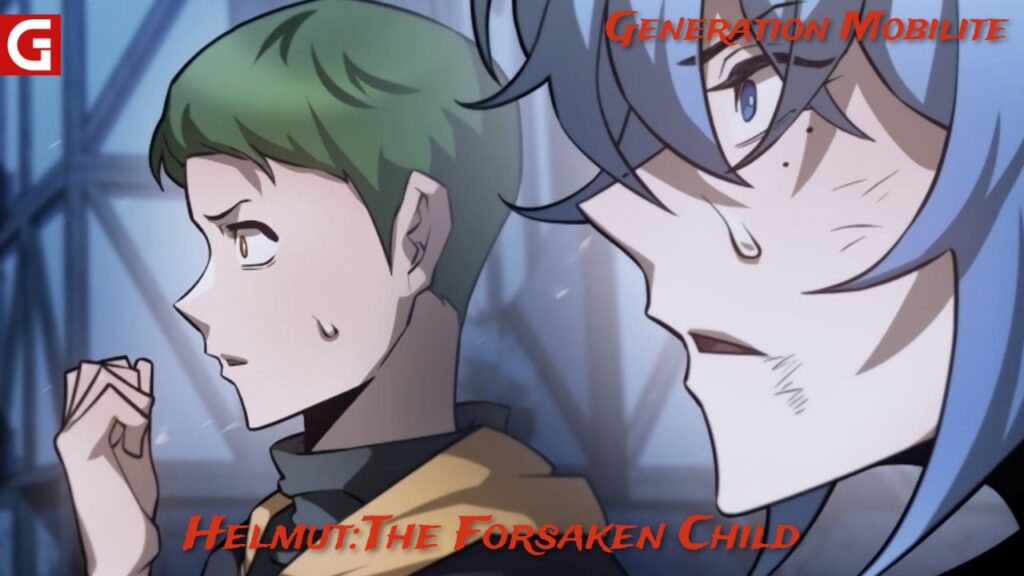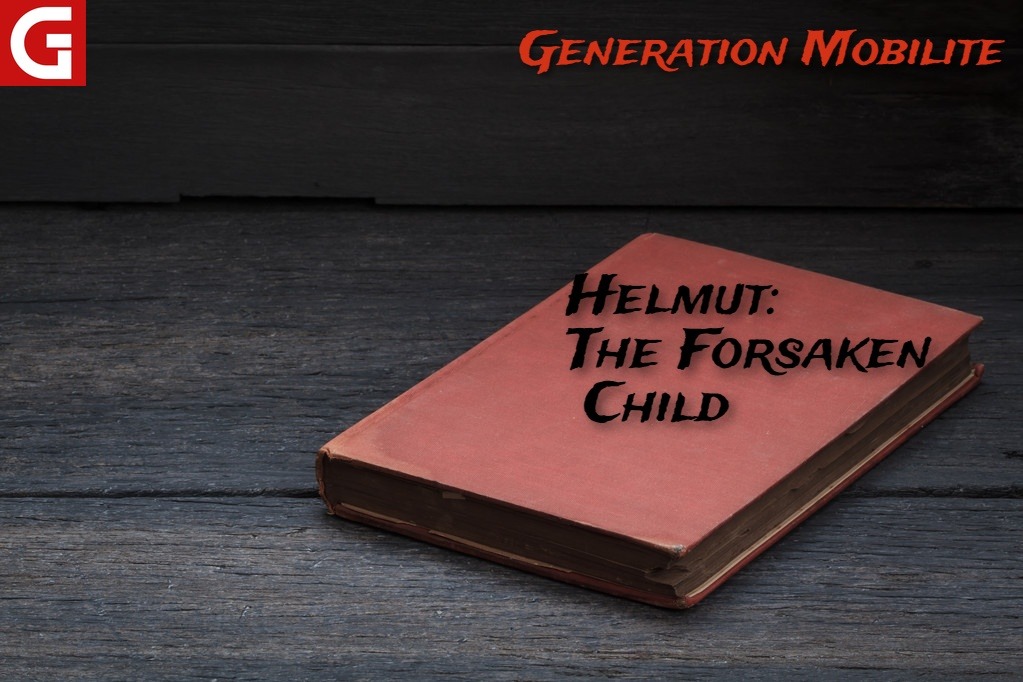Introduction
In the vast realm of fiction, some characters etch themselves into our hearts and minds, transcending the confines of their narratives to take on a life of their own.
Helmut from “Helmut: The Forsaken Child” stands as one such iconic figure, his story both timeless and profoundly human. As the title suggests, Helmut’s beginnings are marked by abandonment and solitude, setting the stage for a hero’s journey like no other.
Table of Contents
In exploring the many facets of this complex character, his experiences resonate on a deeply personal level, inviting us to walk alongside him through the trials and revelations that ultimately shape his destiny.
In this analysis, I will delve into the numerous qualities and intricacies that make Helmut such an impactful and multilayered literary figure. From his mysterious origins to the relationships he forms, his symbolic significance, and reception by critics and readers, no stone will be left unturned in unraveling Helmut: The Forsaken Child story.
His struggles speak to the resilience of the human spirit, while his quest towards self-discovery mirrors our own desire to find meaning and purpose. Join me as we peel back the layers of this forsaken child and uncover the realities of his unique hero’s journey.

Origins and Backstory Helmut: The Forsaken Child
Before analyzing the totality of Helmut’s arc, we must first understand where he came from. Every hero’s journey has a beginning, and Helmut’s starts humbly in the Demonic Beast Forest where he was abandoned at birth. However, his early circumstances are shrouded in mystery, leaving much to the imagination.
- The lack of details surrounding Helmut’s background provides an intriguing opening. Who were his parents? Why did they abandon him? The vacancy of information becomes a point of interest rather than a literary oversight.
- Being orphaned so early and raised by Demonic Beasts lays the foundation for an upbringing vastly different from the human experience. This immediately sets Helmut apart, his isolation being central to his initial characterizations.
- The one certainty we have about his origins is that Helmut was forsaken—left alone in a dangerous realm to fend for himself. This plants the early seeds of his underdog narrative.
While sparse, the details we do have about Helmut’s beginnings are instrumental in establishing his characterization as an outlier in human society. He enters the story devoid of any birthright, status, or privilege, starting from the very bottom both literally and symbolically. This underpinning fuels his motivations and interactions moving forward.
Appearance and Personality Traits
In addition to his mysterious origins, Helmut: The Forsaken Child idiosyncratic physical appearance and personality further develop him as an unconventional protagonist.
Physical Traits:
- Having been raised by Demonic Beasts, it’s no surprise Helmut’s physicality takes on beast-like features. He is described as having sharp fangs, pointed ears, and claws.
- These animalistic traits create an instantly striking visual, setting Helmut apart from traditional human heroes. His appearance elicits both intrigue and fear, aligning with his upbringing outside of civilization.
- While seemingly petite, his body houses unexpected fierceness and agility, reflecting his formative years surviving in the harsh Demonic Beast Forest.
Personality Traits:
Similarly, Helmut’s personality and mental faculties have been nurtured in the non-human realm. He exhibits keen survival instincts but struggles to communicate verbally, relying on guttural sounds and expressions.
Socially, Helmut is tactless and uncultured, oblivious to manners and etiquette. He behaves feral-like, driven by primal needs for food and shelter rather than higher pursuits.
However, underneath this rough exterior lies an innate curiosity and perceptiveness. Helmut adapts quickly, showing cunning that contradicts his lack of formal education.
Helmut’s distinctive appearance and developmental delays position him as an unlikely protagonist. On the surface, he appears more monster than man. But further examination reveals complexity behind the initial savage impressions.
Early Life and Key Relationships
Helmut’s unconventional upbringing paved the way for a challenging integration into human society. His early life experiences and key relationships provide the first glimpses of his greater destiny.
The Demonic Beasts (Guardians):
- Abandoned as an infant, the Demonic Beasts took Helmut in and raised him as their own. They played a formative role, albeit not traditionally nurturing.
- Life among the Demonic Beasts toughened Helmut:The Forsaken Child. He honed beast-like fighting skills and survival tactics to hold his own. This prepared him for the road ahead.
- While not overtly affectionate, the Demonic Beasts gave Helmut his first sense of belonging. Their company established his initial worldview.
Sword Saint Darien (First Human Connection):

Helmut’s encounter with the Sword Saint Darien marked his first real human interaction. Initially wary, their unlikely friendship would prove pivotal.
Darien saw beyond Helmut’s savage exterior, recognizing his good heart. He became Helmut’s link to civilization, piquing his curiosity about the human world.
Their bond was short-lived, cut tragically short by Darien’s premature death. But the Sword Saint’s lasting impact put Helmut on the path towards his greater destiny.
Read More: Serial Killer Isekai Ni Oritatsu Chapter 7
Lady Amara (Mother Figure):
- Lady Amara graciously took Helmut under her wing following Darien’s passing, providing needed nurturing and affection.
- She played the role of surrogate mother, guiding Helmut through necessary lessons in etiquette, communication, and emotion regulation.
- Amara gave Helmut his first taste of human kindness. Her feminine energy balanced Helmut’s feral masculinity.
- These early relationships opened Helmut’s mind and heart to new possibilities beyond the confines of the Demonic Beast Forest. They set the stage for his hero’s journey by exposing him to the wider world and his latent humanity.
Hero’s Journey: Trials, Transformation and Self-Discovery
Helmut’s larger journey from isolated beast child to heroic savior of humanity draws from classic hero’s journey tropes. He faces escalating trials that test his mettle, ultimately leading to profound transformation and self-discovery.
Trials and Tests:
- Thrust outside the familiarity of the forest, Helmut had to quickly adapt. Each encounter, from battling mercenaries to navigating royal court, tested his abilities.
- Hardships brought physical and emotional anguish. But Helmut’s tenacity and quick learning allowed him to turn foes into allies and obstacles into opportunities for growth.
- At times, Helmut stumbled. However, his resolve remained firm, pushing through adversity and refusing to submit to limitations. His underdog status only fueled his fight.
Transformation:
- With each successive trial, glimmers of Helmut’s dormant potential were uncovered. He evolved from a timid beast child to capable fighter and diplomat.
- Mentally, his intellect blossomed, seen in the development of speech, strategy, and foresight. Helmut discovered talents no one expected.
- His emotional range also expanded. He learned empathy, vulnerability, duty, and love. From rage-fueled reactions, he gained self-control and considered responses.
Self-Discovery:
- Peeling away animal instinct, Helmut gained deeper self-understanding. He recognized his core identity – who he is beneath societal notions of status and privilege.
- His role evolved from loner to intermediary between worlds, embracing his “otherness” to foster connection. Helmut found he belonged both nowhere and everywhere.
- Most profoundly, Helmut discovered his heroic spirit. His capacity for courage, sacrifice and rising in the face of darkness became evident, if not predestined.
- Helmut: The Forsaken Child actualized his latent potential through each trial. But the journey itself and not the destination drove his evolution into the savior he was meant to become.
Impact on Readers and Critical Reception
Helmut’s hero’s journey elicits deep emotional investment and resonance from readers. His underdog narrative stirs our innermost hopes, while his transformation mirrors our own desire for self-actualization. Critical reception equally lauds the literary achievement of such an impactful character.
Reader Reception:
- Helmut’s early isolation immediately garners sympathy, drawing readers into his plight right from the start. We root for him to overcome odds stacked against him.
- As he navigates each challenge, flashes of resilience, courage, and inner strength resonate. His triumphs feel like our own.
- Helmut models the redemption arc we wish for ourselves. His actualization from outcast to hero reflects every person’s capability for growth.
Critical Reception:
Reviews praised the emotional potency of Helmut’s character, with many highlighting the “triumph of human spirit” theme that resonates universally.
Must Read:Fell into the Arms of a Mad Villain Spoilers
Critics particularly marveled at the complexity embodied within Helmut. His dichotomies and fluidity between light/dark, human/beast reflect the d


